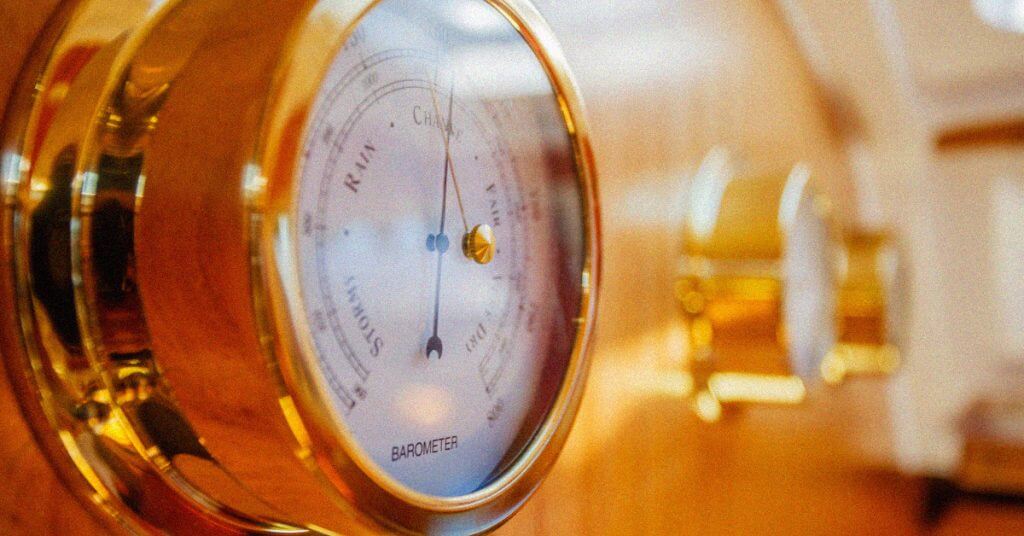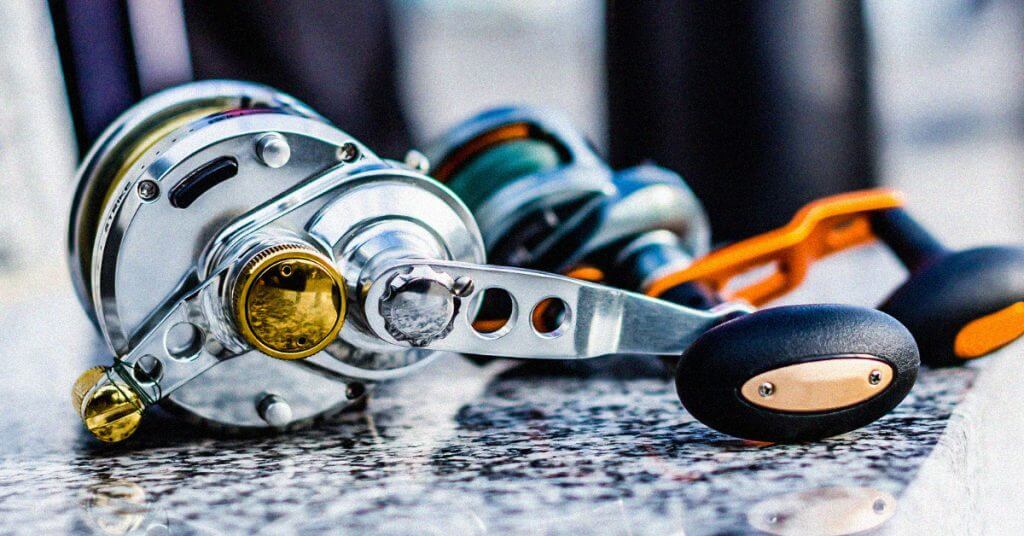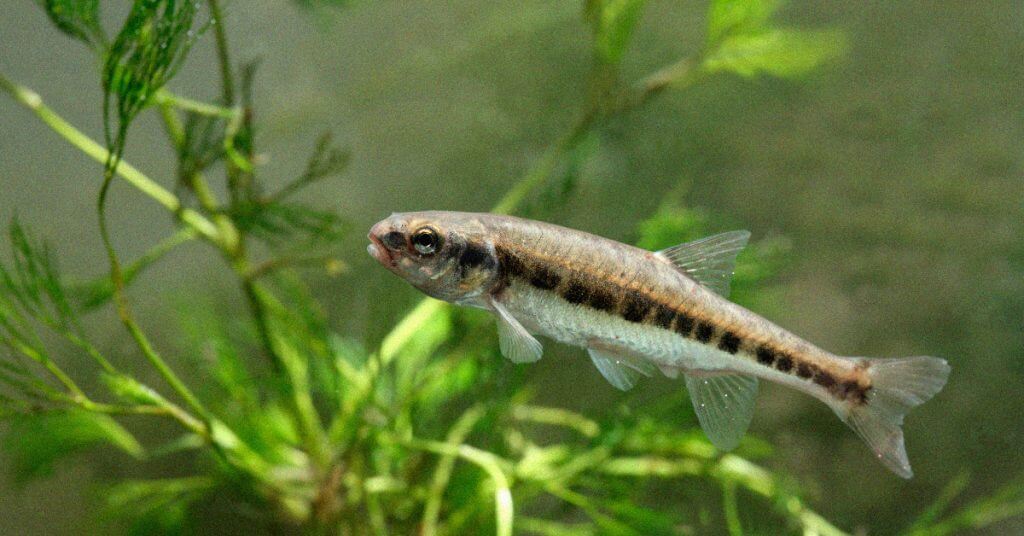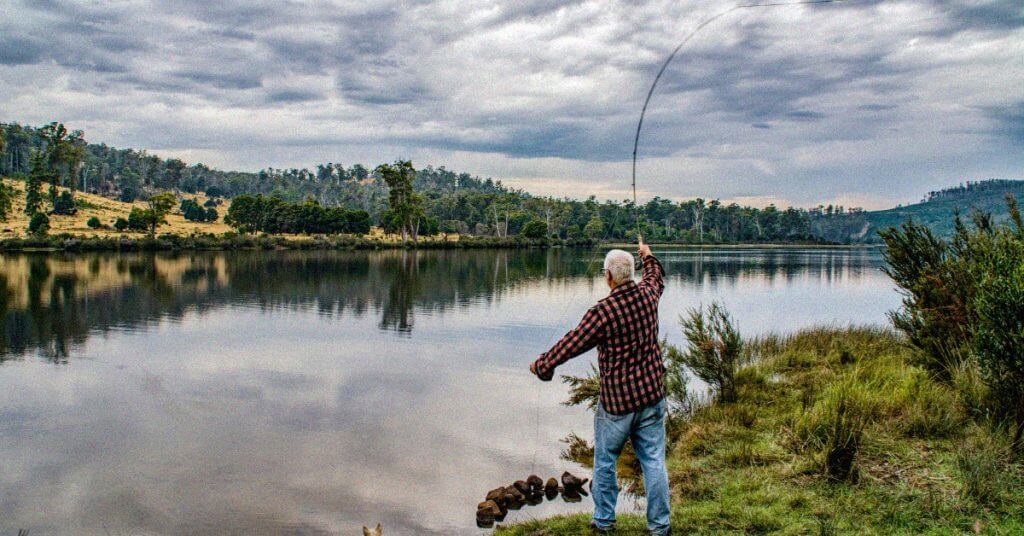You’re here today because you’re ready to step up your fishing game to the next level. You’re tired of playing around in the kiddie pool, and you want to catch bigger bass that you can truly be proud of. Watching your friends and buddies post their catch on Facebook is getting kind of old, and I get it.
Learning how to catch bigger bass is a challenge because it requires you to know a lot, and it’s always a gamble every time you throw out your line. Thankfully, there are some tips and tricks that can help you attract the right fish in the water and keep away the ones that you don’t want.
In this guide on how to catch big bass, I’ll cover everything from location, lures, and bass fishing tips so you can do everything in your power to land the fish you want!
Fishing for Big Bass: Equipment You Can Use
Getting the right equipment is a great place to start. If you’re used to pulling in a two-pound bass all day like it’s your job, then you’ll need to grab some heavy-duty rods, reels, and line if you plan on catching anything bigger.
Rods and Reels
One of the most important tips to catch big bass involves your rod and reel. You don’t need to go out there and purchase a new expensive combo, but I do suggest understanding the differences between a spinning reel and a casting reel. You’ll have a hard time catching large fish using a spinning reel because you won’t be able to size the line up enough.
If you’re trying to catch anything over the 5lb mark, you’ll want to have a casting rod and reel combo in your hands. This rig will allow for a larger line, and you’ll have better drag as well.
While the rod and reel you use for large bass is important, I highly suggest an understanding that most snapped lines or broken rods result from human error and impatience. Make sure to have your drag set properly, and don’t panic when you see a big fish at the end of your line.
Choosing Your Line
My motto for line is, “go as light as you can handle.” You don’t want to aimlessly size up your line because you think you’re bagging a 10lb bass today. That strategy will lead to a day full of frustration and failure.
Instead, focus on line quality and maintenance. In almost all situations, you should never need to use anything heavier than a 10lb test. I’d still recommend going with a monofilament line because it has a bit of flex to it and can make for a better hookset. With larger bass, you want to set the hook really well, so it doesn’t fly out of their mouth during those hard jerks.
If you decide to go with braided lines, understand the main difference in diameter. If you compare a 10lb braid to a 10lb mono, you’ll have a much thicker line with monofilament. That might sound like a good thing, but it’s not. Braided line is denser, which makes it easier to cast, and it holds up better.
The main issue with braided lines, and the reason why I don’t typically use it is visibility. You need to weigh the pros with cons here and try both before making a decision for yourself. I find it easier to just stick with the monofilament line because it does the trick and simplifies the catch.
Equipment Hacks
There are some things you can do to rig your equipment specifically for big fish. Like I said, one thing I never suggest doing is going any larger on line, rod, reel, or lure than necessary. Instead, what you want to do is prepare your smaller rig to catch a larger fish.
The first thing you want to do is prepare your line the right way. Make sure you store it out of direct sunlight, lubricate the line properly, and learn how to tie great knots. If you know how to tie the proper knots, you won’t have to overcompensate by using a larger line that won’t break as easily. Your line will almost always break or come apart at the knot.
Another trick comes in your drag. This article isn’t focusing specifically on that, so I won’t go too crazy but really learn and understand how to set the proper drag based on the fish you’re trying to catch. This reason is why I think it’s important to have a baitcaster when targeting big fish. You’ll have a lot more control over your drag, and the amount of slack you give these fish will play a significant role in your success.
Where to Catch and Find Big Bass
Figuring out where to find big ones is one of the most challenging parts of fishing. We all have those days where we want to bag a big one, but each cast ends up with a one-pounder or less and we just wish they would leave us alone.
If that sounds like you, it means you could be looking in the wrong places and using gear that is too small.
Essentially, we’re not changing the strategy too much when it comes to finding the ideal location. They are still looking for the same things like vegetation, structure, cover, and baitfish. The only difference is the depth of the water. Larger bass will take the game a little deeper. I would suggest looking around the 10-foot mark in depth, but this can vary.
There’s no right or wrong answer here, but here’s my take on the situation. We’ll talk about lures towards the end of the article, but you need to have the right lure, line size, and reel if you plan on catching bigger fish.
If you’re learning how to catch big bass from the bank, you’ll apply all the same bass fishing techniques you normally do, but the difference is, you’re using a larger lure and line, which means you’re scaring away the smaller fish. The little one and two pounders will leave the lure alone because they can’t match up with it.
So, what you’re doing is saving it for the big six-pounder that comes along. What I’m trying to say is, don’t focus too much on location because you still want to fish about the vegetation, on the banks, near the dams.
Fish the Dangerous Spots
Here’s a tip that goes against your instincts and will likely drive you crazy when you try it for the first time. When you’re trying to figure out how to catch huge bass, most people think you need to fish more in the open water, and that’s not what we mean. To find larger fish, you want to go to the muckiest, dirtiest, and grimiest sections of the water.
Large fish will actually hide out right in the thick of things. They won’t be at the edge of a weedline or around the corners of a dock, they’ll be right under there as far as they can where the cover is the thickest. These bass control the ecosystem, so they go where they want, and you need to get in there if you expect to find them.
Don’t be afraid to cast deep into the vegetation and cover, and if you’re planning on doing this, make sure you have a slow-moving lure.
How to Catch Bigger Bass in Ponds
The key to catching big bass in ponds is understanding where they hide and how you find them. I’m a huge believer in pushing your limits while trying hard not to get your boat hung up in the weeds. I can say that has happened to me far too many times.
That’s where you’ll find the big bass, though. They’re lurking in the heavy vegetation along the edge of the pond where no one dares to go. If you’re fishing from the shore, you might even have a better chance because you’ll be able to cast out and retrieve through the slop.
If you’re fishing in seriously dense cover, you’ll want to go with a Texas rigged worm or topwater frog, which I cover in more detail further down in the article. These lures are weedless, so you won’t get hung up or drag too much with you. The design helps you navigate through the dense cover, which is where you need to go to find the big bass you want.
Pro Tips for Catching Big Bass

Now it’s time to get to the good stuff, here are some of the greatest tips I’ve acquired over time from generations as well as from some professional anglers.
Deeper Does Not Mean Better
The first thing people think when they want to catch larger fish is that they need to find a new fishing spot. They want to know how to catch bigger bass in ponds, but they think their finesse pond isn’t holding the fish they want. That couldn’t be further away from the truth. Think about this for a second.
If you can find the most underfished, overgrown, mucky, weedy, and trashy pond in the middle of nowhere, you stand the greatest chance of catching the biggest bass of your life. Why is that?
These guys are towards the top of the food chain, and nothing is eating them. If nothing is eating them, they’re growing and growing all year, so they have a lot of time to develop. You not catching big fish has nothing to do with the location.
Frankly, I don’t believe water depth has anything to do with the size of the fish you catch. For the most part, you can find a 10lb bass in the same place you’ll find a two-pounder. The difference lies in the equipment you need to use and the strategy you need to get them to strike.
Size Up
The one thing that’s obvious is that you need to use larger lures to catch bigger bass. The best way to catch large fish is by using a big fat jig and dragging it, or a crankbait will do the trick too. The reason you need to use bigger lures is because big ones are lazy. They don’t wanna play around with the small meals when they can go directly for the big ones.
Instead of biting around at all these tiny bait fish all day, they’d rather get their meal all in one shot. That meal needs to be you using the right size lure.
You essentially need to take the strategy you’re used to deploying and do the opposite. When finesse fishing, you use smaller lures because you don’t want to scare the bass away, but if you’re fishing for large fish, use big bait because you want to scare them away now.
Fish the Middle of the Day
This goes against my personal fishing protocol, but some professional bass anglers recommend fishing more towards the middle of the day. If you’re using the lures that catch big bass and you’re hitting the water hard in the late morning or early afternoon, you’ve found a recipe for success. Most large catches happen right around the middle of the day.
There’s many theories as to why this happens, but no one has any concrete evidence or proof. I think it could have something to do with their habits and the fact that smaller bass feed during the early morning, so this leaves the water open for the big guys later in the day. I doubt they have that type of “lunch hour” mentality, though.
Either way, sample every flavor and see what works for you. You might find that you can still fish earlier in the day or later in the evening and pull in some five-pound bass. If that’s the case, keep at it. I think fishing is a lot more “abstract,” then it is black and white.
Slow it Down
One of the best big bass fishing tips you’ll ever get applies to your presentation. Think about this. The bass are bigger so they’re not as fast and they’re more in control of the water. As a result, they don’t need to take every feeding opportunity that comes around.
If you remember that bass are opportunistic, you’ll know that they will sit back and patiently wait for the right opportunity.
So, you, as the angler, need to keep that in mind as well. Stay away from fast-moving baits like spinners and move for slower and more “in control” options like frogs, crankbaits, and heavy jigs.
You want to slow down your presentation and give them more time to feel out the situation. If you’re following all the other tips here, you won’t have to worry about getting nibbles from tiny bass and panfish because the lure should be too big for them. By doing this, you’re setting the mood for the big largemouth bass to come out from the hiding spot and offer a strike.
Smallmouth bass don’t typically grow big enough so you’ll be targeting largemouth most of the time.
Lures That Catch Big Bass
Let’s wrap it up by covering some specific lure ideas. Remember, we want to go larger than usual and slower than usual, so we’re staying away from spinnerbaits and swimbaits. Here are my favorites.
Topwater Frogs
One of my favorite lures for bass fishing are frogs. Many people think that big fish don’t like topwaters, but that’s not true. What they don’t like is the “way” you fish topwaters because you move them too quickly. Large bass are still hiding out in the murkiest and muckiest sections of the pond, so you want to make sure to lurk around with the frog and present it slowly.
Plastic/Rubber Worms
I’m a lover of plastic worms and I think that a worm is always a solid choice for bass fishing no matter what size you’re looking to catch. Go with a big fat nightcrawler looking worm and always choose a color that mimics something being injured. I always like to have a little red on my lures, and it might just be me, but I think it helps the cause!
Crankbaits
Get yourself a 6-8 inch bass crankbait and hook it up strong. Slow down the presentation as much as you can, and I suggest going with a lipless option so you can move through the weeds a little better. Keep in mind that these aren’t going to work as well in heavy vegetation. If you can find a single treble hook option you might do better, but you won’t be able to set the hook as easily.
Jigs
If you ask most professional anglers what they like to use, they will tell you a big one with a fat trailer. You can’t go wrong here and it’s a great strategy for fishing the slop as well. If you’re trying to find big guys in dense cover, a properly rigged jig will help you navigate through while fending off against the smaller fish.
Final Thoughts
It’s exciting to think about getting on the water to catch bigger fish. We spend a lot of time focusing on beginner stuff, but I want to make sure you remember a few things. Fishing for small bass is the same as fishing for big ones. The way you fish, the mentality you take, and the strategy is essentially the same.
The only things you’re changing are the size of your lure and line, the speed of your presentation, and maybe the style of reel you use. You can still fish your favorite spot and find the bass that have been hanging out there all along. Over the years I’ve experimented with kayak fishing and I’ve noticed one major thing…
Kayaks help you reach the places where the big bass hang out. They’re not usually swimming out in the open, they’re nestled back in dense cover.
I hope this has helped you and cleared up any confusion or skepticism you might have. Good luck and happy fishing!




